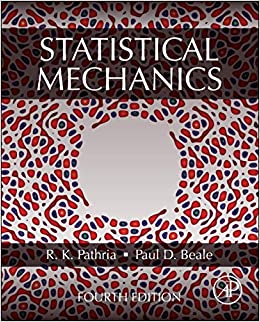Consider a (Gamma times Gamma) GOE random matrix (boldsymbol{R}) whose off-diagonal elements are selected from a normal
Question:
Consider a \(\Gamma \times \Gamma\) GOE random matrix \(\boldsymbol{R}\) whose off-diagonal elements are selected from a normal distribution with zero mean and unit variance, and diagonal elements are selected from a normal distribution with zero mean and variance \(\sigma^{2}=2\).
(a) Verify equation (5.6.16a) by showing that the average of the eigenvalues vanishes: \(\left\langle(1 / \Gamma) \sum_{i=1}^{\Gamma} \lambda_{i}\rightangle=\left\langle\frac{1}{\Gamma} \operatorname{Tr} \boldsymbol{R}\rightangle=0\).
(b) Verify equation (5.6.16b) by showing that the average of the square of the eigenvalues is given by \(\left\langle(1 / \Gamma) \sum_{i=1}^{\Gamma} \lambda_{i}^{2}\rightangle=\left\langle\frac{1}{\Gamma} \operatorname{Tr} \boldsymbol{R}^{2}\rightangle=\Gamma+1\).
(c) Show that parts (a) and (b) are consistent with the results that follow from the limiting large- \(\Gamma\) semicircular eigenvalue distribution \(ho(x)=\sqrt{4-x^{2}} / 2 \pi\), where \(x=\lambda / \sqrt{\Gamma}\).
Step by Step Answer:






